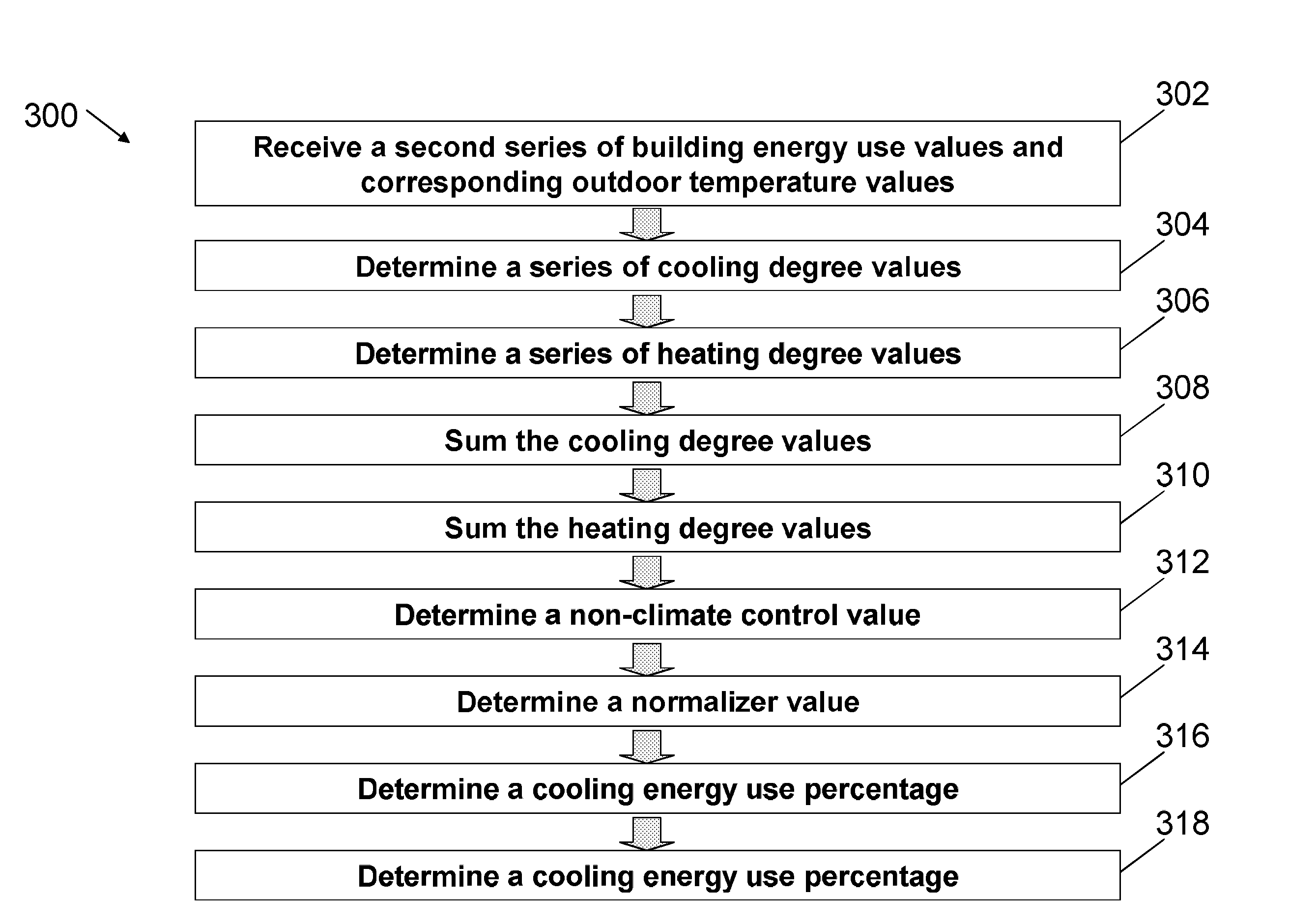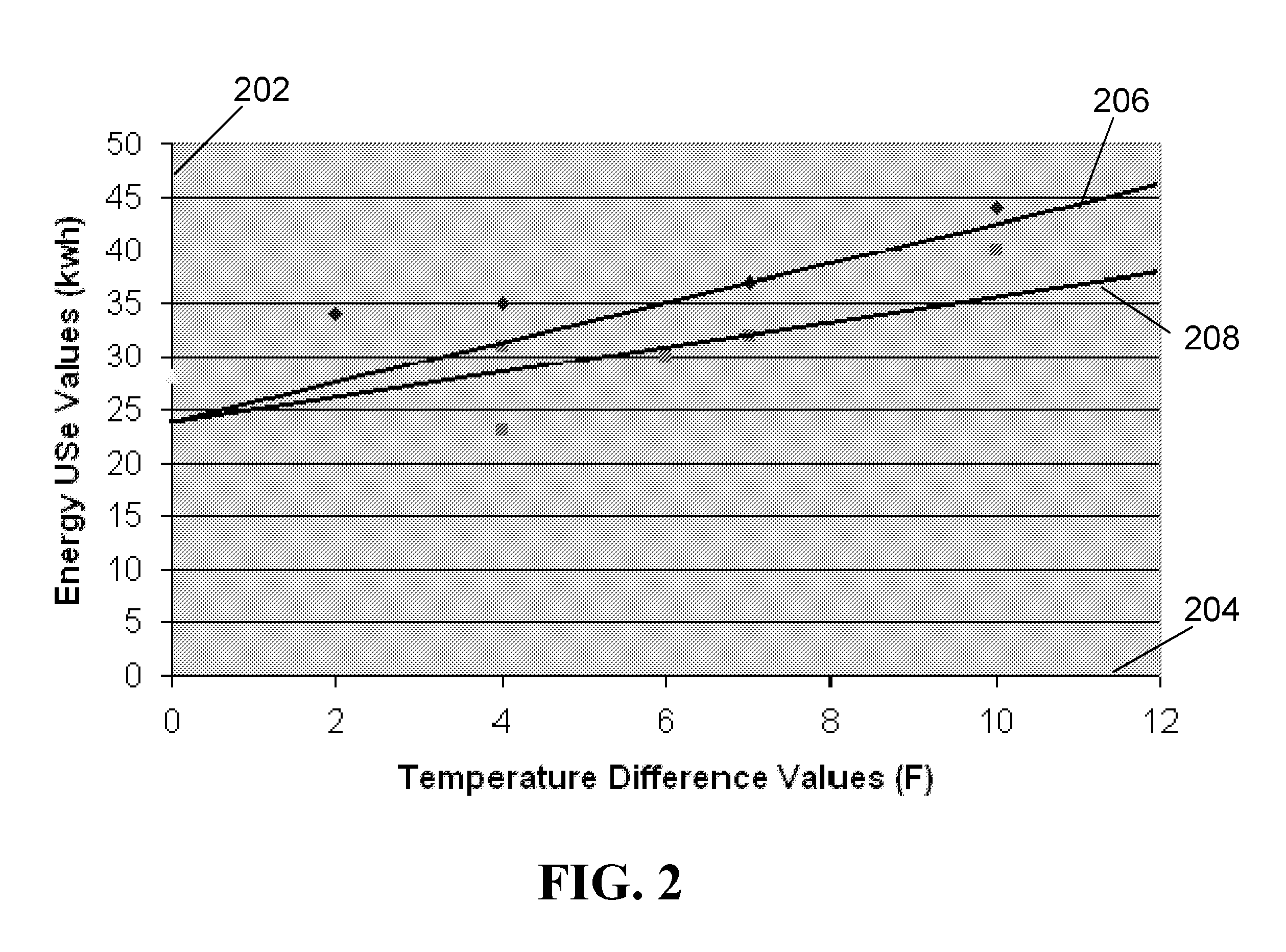Method and System for Disaggregating Heating and Cooling Energy Use From Other Building Energy Use
a technology for building energy use and disaggregation, applied in the field of building energy use, can solve problems such as typical energy consumption
- Summary
- Abstract
- Description
- Claims
- Application Information
AI Technical Summary
Benefits of technology
Problems solved by technology
Method used
Image
Examples
Embodiment Construction
[0031]Definitions. As used in this description and the accompanying claims, the following terms shall have the meanings indicated, unless the context otherwise requires:
[0032]The term “climate control” is inclusive of any type of activity that conditions the air in a building (e.g., cooling or heating).
[0033]Accordingly, the term “climate control energy use” is inclusive of any energy used to condition the air in the building. Such energy use includes, for example, the natural gas used to power a furnace and / or the electricity used to power a heating, ventilating, and air conditioning system (HVAC).
[0034]The term “non-climate control” is inclusive of activities that do not condition the air in a building (e.g., lighting, entertainment, and food storage).
[0035]Accordingly, the term “non-climate control energy use” is inclusive of any energy that is not used to condition the air in the building. For example, non-climate control energy use includes electricity used to power the televis...
PUM
 Login to View More
Login to View More Abstract
Description
Claims
Application Information
 Login to View More
Login to View More - R&D
- Intellectual Property
- Life Sciences
- Materials
- Tech Scout
- Unparalleled Data Quality
- Higher Quality Content
- 60% Fewer Hallucinations
Browse by: Latest US Patents, China's latest patents, Technical Efficacy Thesaurus, Application Domain, Technology Topic, Popular Technical Reports.
© 2025 PatSnap. All rights reserved.Legal|Privacy policy|Modern Slavery Act Transparency Statement|Sitemap|About US| Contact US: help@patsnap.com



